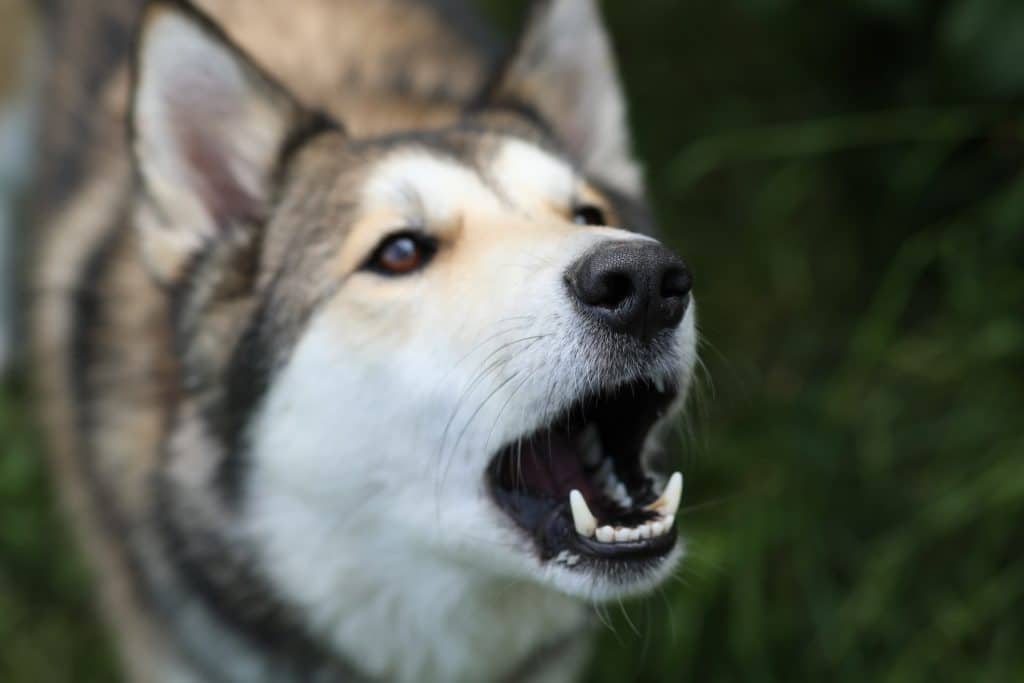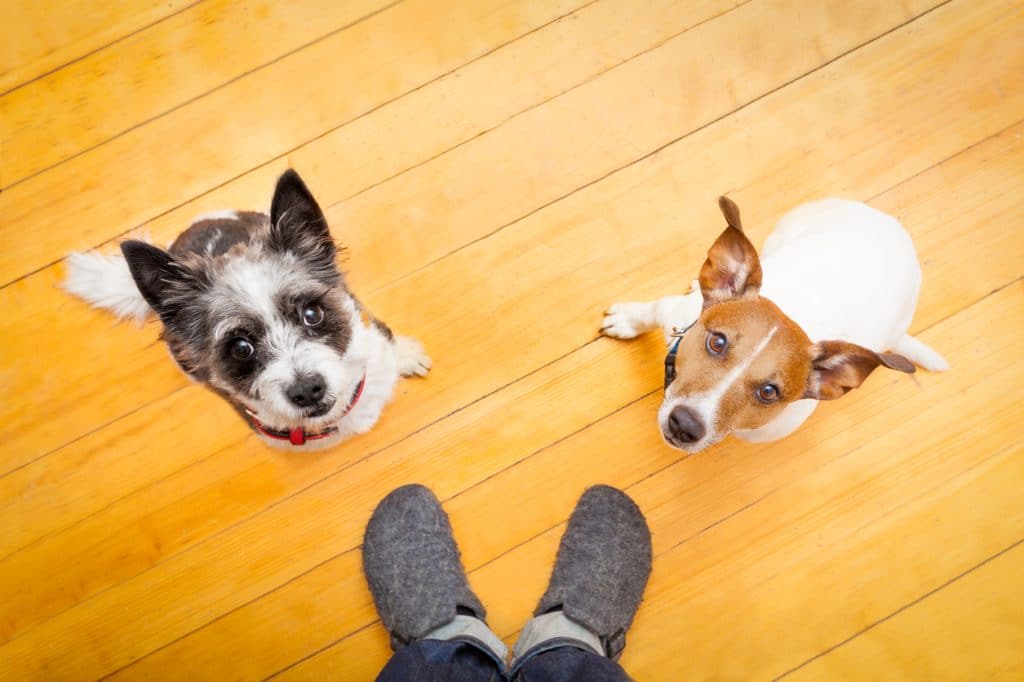In a perfect world, your dog would be able to tell you exactly what they need when they need it. But just because they can’t communicate with words doesn’t mean they don’t communicate at all. Your dog will definitely find a way to get the point across when they need something from you.
The main ways dogs communicate with us are body language, vocalisation, eye contact, and behaviour sequences, according to Allie Bender, founder, author, and behaviour consultant at Pet Harmony Animal Behavior and Training.
And to know if you’re getting the message right? Paige Gordon, Certified Professional Dog Trainer with SpiritDog Training, says if your dog relaxes or happily responds, you’re probably on track—but if they seem frustrated or repeat the behaviour again, try again.
To help you better understand your dog’s behaviour, we’ll break down the most common ways dogs express themselves in this guide, plus how to respond so your pup feels understood.
How To Understand Your Dog
Understanding your dog starts with paying attention to the signals they give. You’ll want to look for:
- Movement. A dog’s body language speaks volumes. If your dog moves toward something—whether it’s you, another person, or their food bowl—it usually signals interest or a request for attention. On the other hand, moving away can indicate uncertainty.
- Vocalizations. Barks, growls, and whines aren’t just noise—they’re messages. A sharp, repetitive bark might be an attention-seeking “Hey, look at me!” Growling can mean playfulness or a warning, depending on context, and whining might express excitement, frustration, or even pain (if they seem to be whining for no reason).
- Eye contact. If your dog stares at you, they’re making direct eye contact to communicate they want something. “They will usually seek eye contact with you, look at the thing they want, then back to you,” adds Gordon. If your dog avoids your gaze, they may be feeling nervous or submissive.
It’s important to remember that even if our dogs give us signals, we can never be quite sure what they’re thinking. “Humans attach a lot of morals to behaviour, and we tend to make assumptions about our dog’s internal wants and needs and feelings,” says Bender. “At the end of the day, we don’t actually get to know that information 100%.”
But we can still take action to try to decipher our dogs’ signals and get them what they need to be their happiest, healthiest selves.

iStock/Shuvalova Viktoria
Signs Your Dog Wants Exercise or Movement
Dogs don’t always wait patiently when they need to burn off energy. If your dog wants to exercise or move around, they’ll often let you know with clear (and sometimes persistent) signals, especially if they’re used to a specific exercise routine.
Signs your dog wants exercise include:
- Going to the area where their lead is kept and staring at it
- Hanging out by the door you typically leave through for walks
- Grabbing your shoes
- Getting into mischief—chewing, digging, or zooming around the house out of boredom
What to do: If your dog is showing these signs, it’s a good idea to give them an outlet for their energy. A walk, a swim, or a training session can help meet their movement needs and prevent boredom. The right amount of exercise depends on factors like age, breed, and health.
Signs Your Dog Wants Attention or Play
Sometimes, your dog isn’t asking for a walk—they just want you. To grab your attention for some play time, Bender says they might perform play solicitation behaviours.
Play-request behaviours might look like:
- Play bowing (stretching front legs forward with their rear in the air—a universal dog signal for “let’s play!”)
- Placing a paw on you or nudging you
- Picking up a toy and shoving it at you or dropping it in your lap
- Bouncing around or spinning excitedly
What to do: If your dog seems to be asking for play time, you can try games like tug-of-war, fetch, hide-and-seek, puzzle toys, or other indoor activities.

miniseries via iStock
Signs Your Dog Wants Food
Dogs have a way of making it very clear when they’re feeling hungry. Some are subtle, sitting politely near their food bowl, while others are a bit more dramatic. If their request goes unanswered, they might even escalate to whining or barking.
Common signs your dog wants food include:
- Sitting or pacing near their food bowl or pantry
- Staring at you intensely while you eat
- Nudging their bowl across the floor
- Drooling at the sight or smell of food
- Attempting to “help themselves” by counter-surfing
- Bringing you their empty food bowl
What to do: If your dog is asking for food, first check if it’s actually mealtime—it can be hard to tell the difference between begging and hunger! If they truly need a meal or snack, stick to a consistent feeding schedule and use portion control to maintain a healthy weight. And if their appetite suddenly changes, a vet visit may be necessary to rule out any health concerns.
Other Things Your Dog Wants To Tell You
Beyond food, play, and exercise, dogs have plenty of other messages they try to send us. For example, dogs are keen observers of their surroundings, and they may try to warn you about something they perceive as a threat, even if it’s just the mail carrier or a suspicious-looking trash can.
Here are some other common things your dog might be trying to tell you:
- “Something’s stuck under the couch!”—“If your dog suddenly has an obsession with the underside of your couch or coffee table, it’s likely that a toy or treat has fallen under there,” says Gordon.
- “There’s a threat (or so I think)!”—Stiff posture, growling, or focused barking can signal your dog senses something unusual in their environment.
- “I want up (or down)!”—Pawing at the couch, bed, or even you might be a request for help getting to a desired spot.
- “I’m nervous or uncomfortable.”—Pacing is an anxious behaviour in dogs. If they’re walking around in circles, they’re most likely feeling a little stressed.
What to do: If your dog is trying to communicate something, take a moment to examine your surroundings—there’s often a clue in the environment.

damedeeso via iStock
Signs Your Dog Wants Help
Dogs may be good at communicating their everyday wants, but when something is wrong, Bender says their signals can be more subtle. If your dog is in pain or feeling unwell emotionally, they’ll often show it through changes in behaviour or movement.
Those changes might include:
- A roached back. This can signal pain.
- Changes in gait or stride. Even things as subtle as walking with their head lower could indicate discomfort.
- Sudden fears. “Whenever someone tells me their dog suddenly became afraid of thunderstorms or suddenly has noise sensitivity, I tell them to go to their vet,” says Bender.
- Changes in bathroom habits. Accidents in the house, diarrhoea, or other GI issues could point to discomfort or pain.
- Excessive licking. This can point to irritation or an injury.
If your dog is showing any of these signs, it’s best to call your vet. Some issues, like a minor upset stomach, may pass on their own, but others—especially pain or sudden behavioural shifts—could signal something more serious. When in doubt, a quick check-in with your vet can help ensure your pup gets the care they need.



